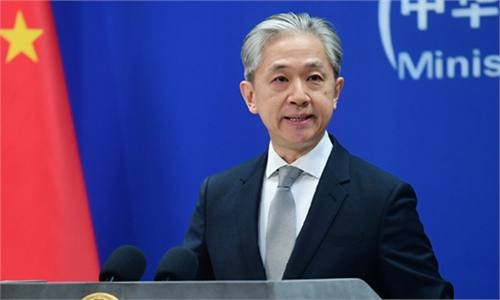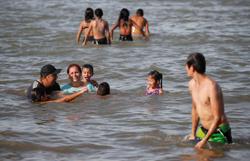ACCORDING to consultant orthopaedic surgeon Dr Ruzaimi Md Yusoff at MSU Medical Centre, most people reach their peak bone mass around the age of 30. After that, bone remodelling continues, but you lose slightly more bone mass than you gain because of a decrease in osteoblast activity. That’s why it is important to have as much bone mass as possible by the age of 30.
There are multiple modifiable and non-modifiable risk factors which can affect bone health.
Diet – A low calcium intake will cause low bone density and will lead to early bone loss causing a higher risk of fractures. Not getting enough vitamin D can also increase the risk of osteoporosis because it is important for calcium absorption.
Physical activity – Not being active for long periods can increase the chances of getting osteoporosis. Muscles and bones become stronger with regular exercise and thus delay the onset of osteoporosis.
Body weight – Maintaining an ideal body weight is important for bone health. This is because extremely thin individuals will have lesser bone mass. Therefore, severely restricting food intake and being underweight weaken the bone.
Smoking – Many research suggests that tobacco will increase the risk of osteoporosis. Women who smoke go through menopause earlier than those who don’t smoke.
Alcohol – People who consume a lot of alcohol are more likely to get osteoporosis.
Medicines – Usage of corticosteroid medications such as cortisone, prednisolone and dexamethasone can be damaging to the bone.
Age – Advanced age causes thinning and weakening of the bone.
Gender – Women have a greater risk of osteoporosis as they have less bone tissue than men. Women also lose bone faster than men because of hormonal changes that occur after menopause.
Ethnicity – Caucasian and Asian women are more prone to osteoporosis.
Family history – A strong family history of osteoporosis predisposes an individual to develop osteoporosis at an earlier age.
Maintaining bone health is important to prevent or slow down the process of bone loss. Dietary calcium intake is extremely important. Good sources of calcium include dairy products, almonds, broccoli, kale, canned salmon with bones, sardines and soy products such as tofu. Calcium supplements may also be prescribed by a doctor if dietary calcium intake is lesser than the requirement.
Adequate vitamin D intake is important for calcium absorption. Good sources of vitamin D include oily fish such as salmon, trout, whitefish and tuna. Additionally, mushrooms, eggs and fortified foods, such as milk and cereals, are good sources of vitamin D. Sunlight also contributes to the body’s production of vitamin D. Vitamin D supplement may also be prescribed if indicated.
Physical activities especially weight-bearing exercises can help build strong bones and slow the process of bone loss. Avoiding smoking and limiting alcohol intake will also help delay the occurrence of osteoporosis.
There are some signs of osteoporosis that we should look out for which include receding gums, chipped or brittle nails, a weakened grip and fractured bones.
It’s important to seek medical attention for any type of bone pain, especially if the pain is severe, persistent, worsening over time or associated with swelling, redness, warmth, a fever, unintentional weight loss, or a palpable mass or lump.
Since osteoporosis does not have any symptoms until a bone breaks, it is important to talk to your doctor about your bone health. A bone density test may need to be done if your doctor feels that you are at risk for osteoporosis. A bone density test measures the density of your bones and assesses whether you have osteoporosis. It can also tell you the risks of breaking a bone.
Medications may be prescribed to help prevent and treat osteoporosis. These include bisphosphonates, oestrogen agonists/antagonists, calcitonin, parathyroid hormone, oestrogen therapy and hormone therapy.
Preventing osteoporosis from a young age
▪ Administering blood tests
HE best time to start caring for your bones would be during your childhood as your bones begin to develop and grow, gaining strength and mass. Your lifelong skeletal health is determined by the amount of bone mass you obtain while you are young.
Nutrition plays a pivotal role, particularly your intake of calcium and vitamin D. The daily calcium needs for infants under six months starts at 200mg and gradually increases, whereas teenagers between the ages of 14 and 18 require 1,300mg per day to support their optimal growth.
For babies under a year old, a minimum daily intake of 400 IU of vitamin D is recommended while those older than a year old should aim for 600 IU per day.
Factors that increase the likelihood of impaired bone health
Certain groups of children and adolescents face an elevated risk of experiencing compromised bone health:
- l Premature babies and infants with a low birth weight
Physical activities such as jogging can help prevent osteoporosis. may exhibit lower-than-average bone mass during their initial months of life
- l Children who are on prolonged medication regimens such as steroids and anti-seizure drugs
l Children with conditions such as cystic fibrosis, celiac disease and inflammatory bowel disease may struggle with proper nutrient absorption
- l Children with medical conditions such as juvenile idiopathic arthritis, osteogenesis imperfecta, diabetes, kidney disease, hyperthyroidism, Cushing’s syndrome and anorexia nervosa
- l Children relying heavily on cancer treatments, anticonvulsants used for epilepsy management and corticosteroids employed for treating various conditions such as arthritis and asthma
- l Children who experience extended periods of immobility or are bedridden
- l Adolescent girls who experience infrequent, delayed or irregular menstrual cycles due to factors like intense athletic training, emotional stress or low body weight
- l Children with physical limitations due to conditions like cerebral palsy and other related disorders
- l Children and adolescents who engage in a sedentary, inactive way of life
Childhood obesity contributes to the decrease in bone density, yet further research is required to distinguish its impact from other factors, such as diet, race, ethnicity, lifestyle and exposure to the sun.
Diagnosing osteoporosis in children
Osteoporosis is typically identified when a child experiences a bone fracture. The diagnostic process may involve:
- l Reviewing the medical history
- l Conducting a physical examination
- l Examining family medical histories to ascertain if there is a genetic component
- l Employing a bone scan, specifically dual-energy x-ray absorptiometry (DEXA), to assess bone density
Preventative measures
Ongoing research is exploring strategies to optimise peak bone mass in children. However, parents and children can adopt a healthy diet and lifestyle by considering the following recommendations:
- ▪ Ensure a consistent intake of calcium and vitamin D
- ▪ Engage in regular physical activity, with a preference for weight-bearing exercises like walking and running
- ▪ Consider calcium and vitamin D supplements, as advised by your doctor
- ▪ Avoid smoking
Prevention towards osteoporosis starts when you are young. Taking early preventive actions reduces the risk of osteoporosis down the road. This involves a multi-faceted approach, encompassing a balanced diet rich in calcium and vitamin D, regular physical activity and a vigilant eye on underlying medical conditions and medications that may contribute to the risk.
Furthermore, promoting a healthy lifestyle is essential to safeguard children against the potential consequences of osteoporosis later in life. Early interventions and a comprehensive understanding of the risk factors can pave the way for stronger bones and a healthier future
Related posts:











